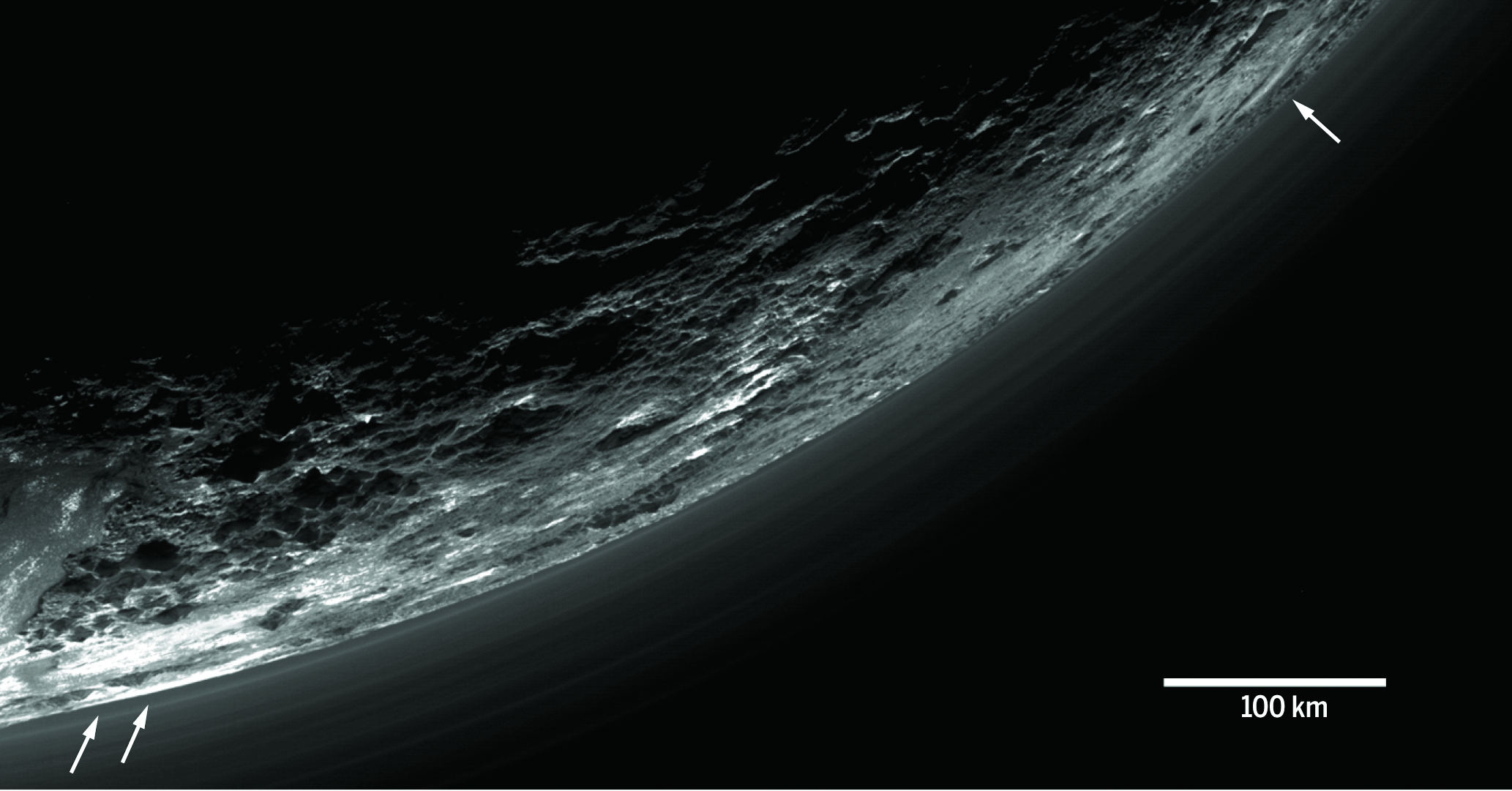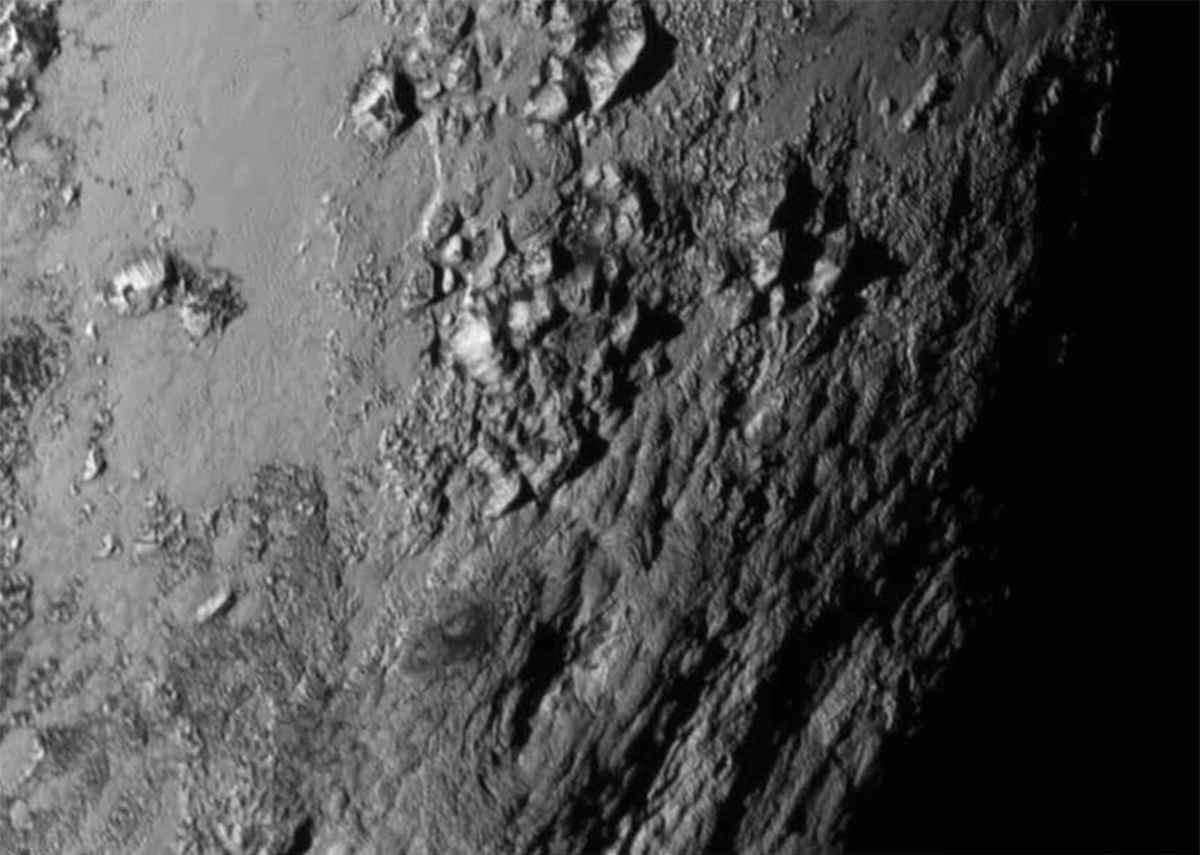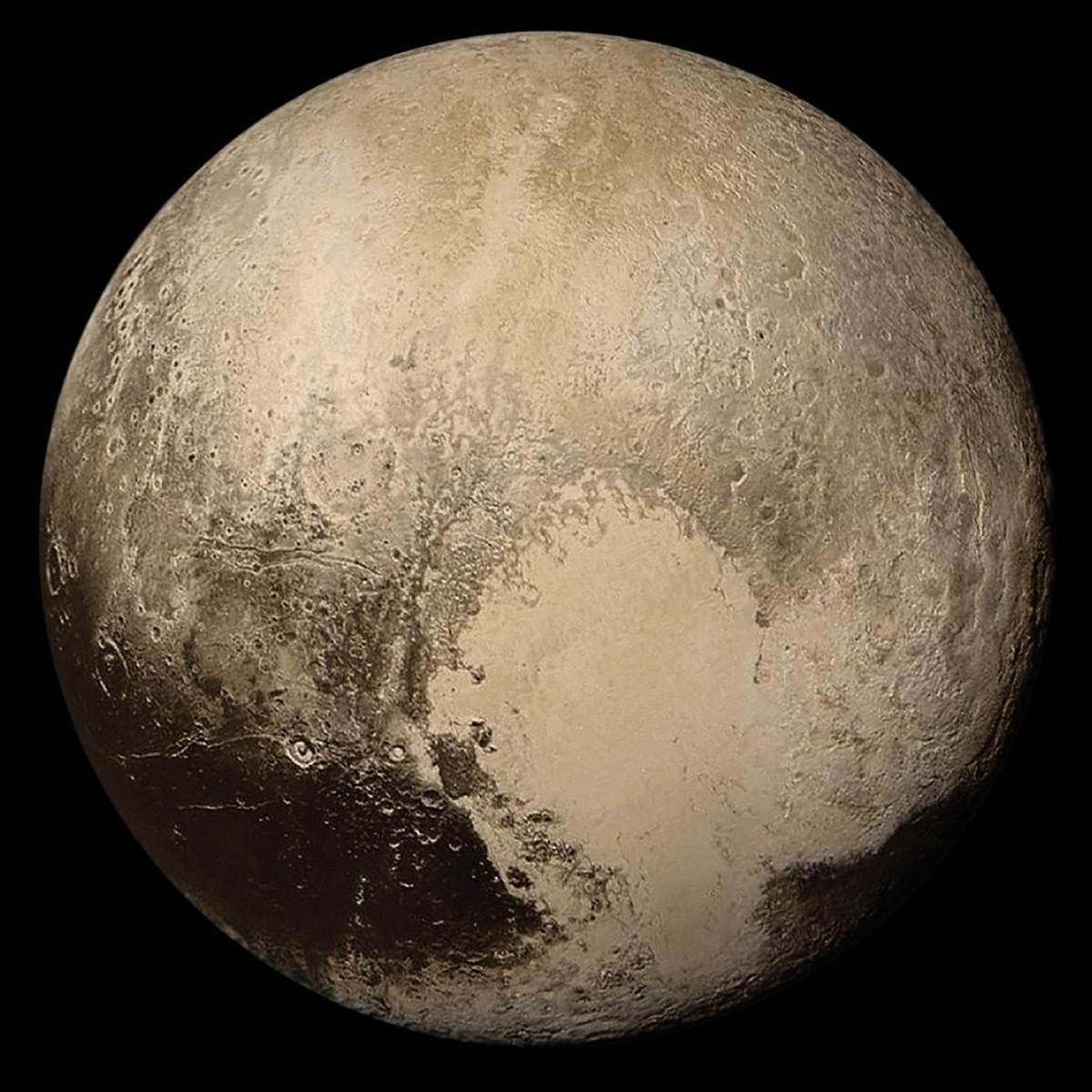New data on Pluto and its moons
2016/03/18 Etxebeste Aduriz, Egoitz - Elhuyar Zientzia Iturria: Elhuyar aldizkaria

The New Horizons probe continues to send the data taken when passing by Pluto in July 2015. After analyzing some of these data, results and conclusions have been published today in the journal Science in five articles (1, 2, 3, 4, 5).
One of the articles describes the multiple geological characteristics of Pluto and Karon. Both stars have seen that they have more differences than similarities. In Pluto have been detected tectonics, glacial movements, transport of large blocks of water ice and wide hills. It is believed that the latter may be due to ice volcanoes. In addition, the surface variability of Pluto suggests that it has undergone numerous transformations due to processes such as erosion. And that means it has been geomorphically active in the last hundreds of millions of years. Karon, however, has not had this activity in recent years, has craters and older than Pluto and has two distinct parts: the north is relief and the heboard is much flatter.
Another article analyzes the color and composition of the frozen surfaces of Pluto and Caron. The surface of the plutonas predominates volatile ice of water and nitrogen, and the geomorphic processes at different time scales make their distribution very complex.
On the other hand, the study of Pluto's atmosphere has revealed that it is colder and more compact than expected. And it has many layers. Small moons Estix, Nix, Zerbero and Hidra have also been studied, irregularly, shiny surface, which rotate quickly. Finally, it explains the influence of Pluto in the surrounding space in terms of solar wind, energy particles and dust.

Gai honi buruzko eduki gehiago
Elhuyarrek garatutako teknologia






